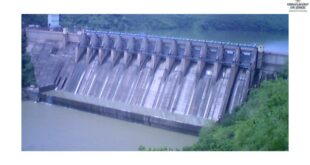Oceanic buoys, tide gauges failed to detect any unusual activity before the disaster While early warning systems around the world were quick to pick up the earthquake in the Pacific, the tsunami that subsequently ravaged the Indonesian city of Palu, claiming more than 800 lives, seems to have struck in stealth, baffling the scientific community. Scientists at the Hyderabad-based Indian National Centre for Ocean Information Services (INCOIS), which runs the state-of-the-art Indian Tsunami Early Warning System (ITEWS), detected the earthquake on the Pacific Ocean bed at 3.30 p.m. (IST) on September 28, and immediately issued an alert to the Indian Oceanic community, including Indonesia, and international networks. “We monitored the situation for three hours but did not detect any unusual activity in the oceanic buoys and sea level tide gauges,” said director S.S.C. Shenoi. Information gathered by INCOIS showed that within five minutes of the 7.5 magnitude earthquake being detected on the Pacific Ocean floor, a warning was issued by the Indonesian Tsunami Warning network too. But after three more warnings, the alert was withdrawn as nothing was visible on the ocean gauges or buoys. “The Palu tsunami has been very peculiar. We have not seen anything like it before, for not only were there no readings in the buoys and tide gauges, only a small narrow bay was hit,” said E. Pattabhi Rama Rao, head, Ocean Observations & Data Management Group, Tsunami & Storm Surge Early Warning Services Group, INCOIS.
Source : https://www.thehindu.com/todays-paper/scientists-puzzled-by-peculiar-tsunami/article25100990.ece
 Chinmaya IAS Academy – Current Affairs Chinmaya IAS Academy – Current Affairs
Chinmaya IAS Academy – Current Affairs Chinmaya IAS Academy – Current Affairs


